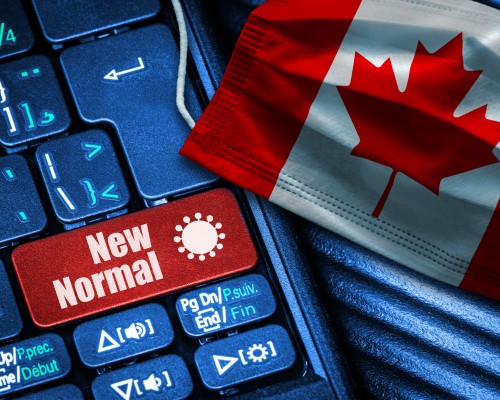Another Rate Hike, Signalling More To Come
Another Rate Hike, Signalling More To Come. The Governing Council of the Bank of Canada raised the overnight policy rate by a full 50 basis points once again today, marking the third rate hike this year. The two back-to-back half-point increases are without precedent, but so were the dramatic pandemic rate cuts in the spring of 2020. Indeed, with the surge in Canadian inflation to 6.8% in April, the Bank of Canada is still behind the curve. The chart below shows that inflation remains well above the Bank’s forecasts. Today’s press release suggests they now estimate that inflation rose again in May and could well accelerate further.
Today’s policy statement emphasized that “As pervasive input price pressures feed through into consumer prices, inflation continues to broaden, with core measures of inflation ranging between 3.2% and 5.1%. Almost 70% of CPI categories now show inflation above 3%. The risk of elevated inflation becoming entrenched has risen. The Bank will use its monetary policy tools to return inflation to target and keep inflation expectations well anchored.”
“The increase in global inflation is occurring as the global economy slows. The Russian invasion of Ukraine, China’s COVID-related lockdowns, and ongoing supply disruptions are all weighing on activity and boosting inflation. The war has increased uncertainty and is putting further upward pressure on prices for energy and agricultural commodities. This is dampening the outlook, particularly in Europe. In the United States, private domestic demand remains robust, despite the economy contracting in the first quarter of 2022.”
The Bank said that “Canadian economic activity is strong and the economy is clearly operating in excess demand. National accounts data for the first quarter of 2022 showed GDP growth of 3.1 percent, in line with the Bank’s April Monetary Policy Report (MPR) projection. Job vacancies are elevated, companies are reporting widespread labour shortages, and wage growth has been picking up and broadening across sectors. Housing market activity is moderating from exceptionally high levels. With consumer spending in Canada remaining robust and exports anticipated to strengthen, growth in the second quarter is expected to be solid.” Another Jumbo Rate Hike, Signalling More To Come.
Another Rate Hike, Signalling More To Come
Bottom Line
The Bank of Canada couldn’t be more forthright. The concluding paragraph of the policy statement is as follows: “With the economy in excess demand, and inflation persisting well above target and expected to move higher in the near term, the Governing Council continues to judge that interest rates will need to rise further. The policy interest rate remains the Bank’s primary monetary policy instrument, with quantitative tightening acting as a complementary tool. The pace of further increases in the policy rate will be guided by the Bank’s ongoing assessment of the economy and inflation, and the Governing Council is prepared to act more forcefully if needed to meet its commitment to achieve the 2% inflation target.”
The Bank of Canada has told us we should expect at least another 50 bps rate hike when they meet again on July 13. It could even be 75 bps if inflation shows no sign of decelerating. The Bank estimates that the overnight rate’s neutral (noninflationary) level is 2%-to-3%. Traders currently expect the policy rate to end the year at roughly 3%.
This was a very hawkish policy statement. The central bank is defending its credibility and will undoubtedly continue to tighten monetary policy aggressively.
Blog Signature:
Questions? Comments? Reach out:
—
📲 705-606-2727
📧 jmuir@dominionlending.ca
💻 https://jonmuirmortgages.ca
🌎 Google Business Page
Dominion Lending Centers – The Mortgage Source. Independently Owned and Operated.
License #: 10145
609-92 Caplan Ave. Barrie, On L4N 9J2
Another Rate Hike, Signalling More To Come






